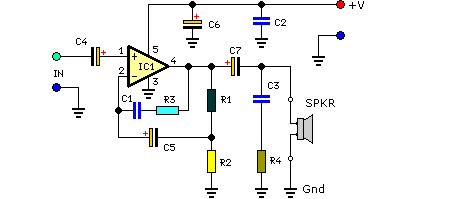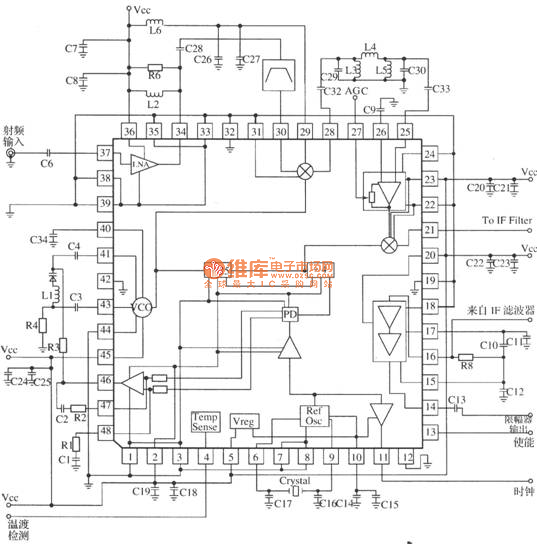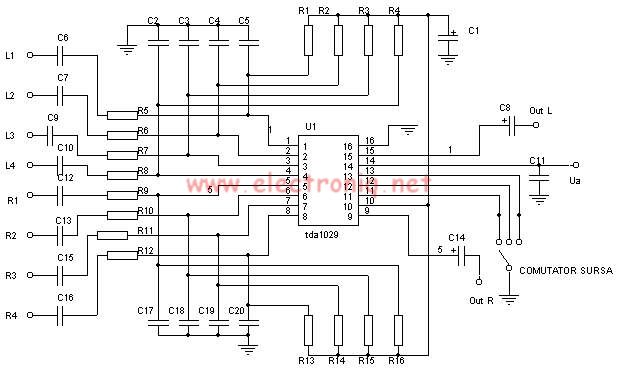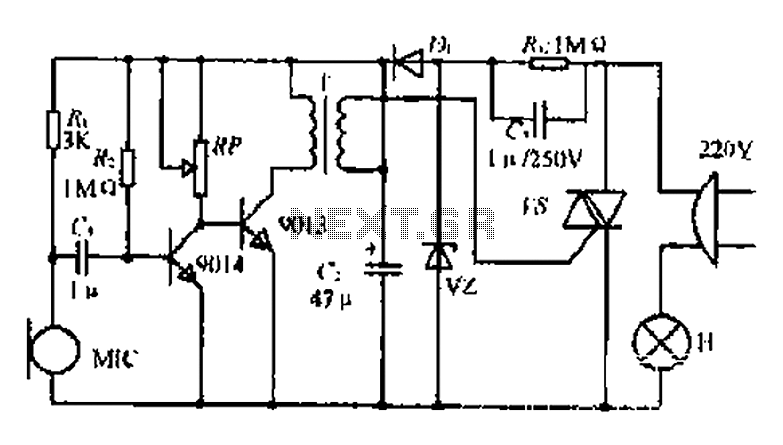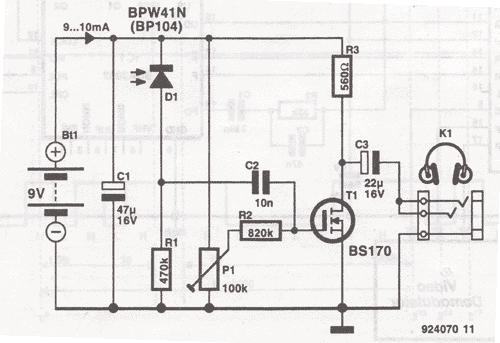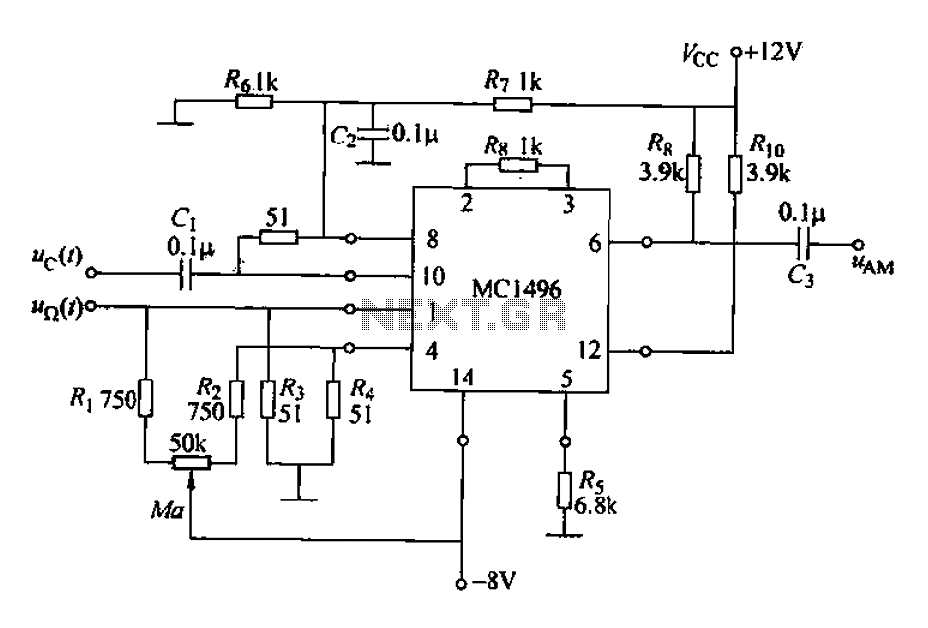
Simple 455Khz If Amplifier Circuit
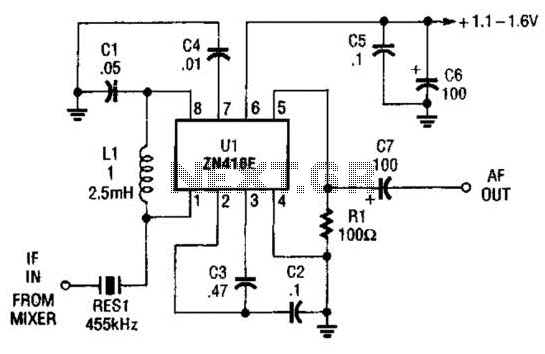
The ZN416E can be configured as a simple 455-kHz IF amplifier. In this case, the circuit's center frequency and bandwidth are set by RES1, which is a Murata CSB455E ceramic resonator.
The ZN416E is a versatile integrated circuit designed specifically for intermediate frequency (IF) amplification applications, particularly at a frequency of 455 kHz, which is commonly used in AM radio receivers. The configuration of the ZN416E allows for straightforward integration into various radio frequency (RF) systems, providing a reliable amplification stage that enhances signal quality.
The center frequency of the amplifier is critically determined by the resonator, RES1, which in this instance is a Murata CSB455E ceramic resonator. This component is designed to provide a stable frequency reference, ensuring that the amplifier operates effectively within the desired frequency range. The characteristics of the ceramic resonator, such as its quality factor (Q) and temperature stability, play a significant role in defining the bandwidth of the amplifier. A higher Q factor generally results in a narrower bandwidth, leading to improved selectivity and reduced interference from adjacent channels.
In practical applications, the ZN416E can be connected to a variety of external components to tailor its performance further. For instance, additional passive components such as capacitors and resistors may be employed to adjust gain and optimize input/output impedance matching. Proper layout and grounding techniques are essential to minimize noise and enhance overall circuit performance, particularly in RF applications where signal integrity is paramount.
The ZN416E's ability to operate in a wide range of supply voltages and its low power consumption make it suitable for battery-operated devices, while its compact size facilitates integration into space-constrained designs. Overall, the ZN416E, when configured with the Murata CSB455E resonator, forms a robust solution for 455-kHz IF amplification, suitable for various consumer and industrial applications in the RF spectrum. The ZN416E can be configured as a simple 455-kHz IF amplifier. In this case, the circuit`s center frequency and bandwidth are set by RES1 (a Murata CSB455E ceramic resonator).
The ZN416E is a versatile integrated circuit designed specifically for intermediate frequency (IF) amplification applications, particularly at a frequency of 455 kHz, which is commonly used in AM radio receivers. The configuration of the ZN416E allows for straightforward integration into various radio frequency (RF) systems, providing a reliable amplification stage that enhances signal quality.
The center frequency of the amplifier is critically determined by the resonator, RES1, which in this instance is a Murata CSB455E ceramic resonator. This component is designed to provide a stable frequency reference, ensuring that the amplifier operates effectively within the desired frequency range. The characteristics of the ceramic resonator, such as its quality factor (Q) and temperature stability, play a significant role in defining the bandwidth of the amplifier. A higher Q factor generally results in a narrower bandwidth, leading to improved selectivity and reduced interference from adjacent channels.
In practical applications, the ZN416E can be connected to a variety of external components to tailor its performance further. For instance, additional passive components such as capacitors and resistors may be employed to adjust gain and optimize input/output impedance matching. Proper layout and grounding techniques are essential to minimize noise and enhance overall circuit performance, particularly in RF applications where signal integrity is paramount.
The ZN416E's ability to operate in a wide range of supply voltages and its low power consumption make it suitable for battery-operated devices, while its compact size facilitates integration into space-constrained designs. Overall, the ZN416E, when configured with the Murata CSB455E resonator, forms a robust solution for 455-kHz IF amplification, suitable for various consumer and industrial applications in the RF spectrum. The ZN416E can be configured as a simple 455-kHz IF amplifier. In this case, the circuit`s center frequency and bandwidth are set by RES1 (a Murata CSB455E ceramic resonator).
